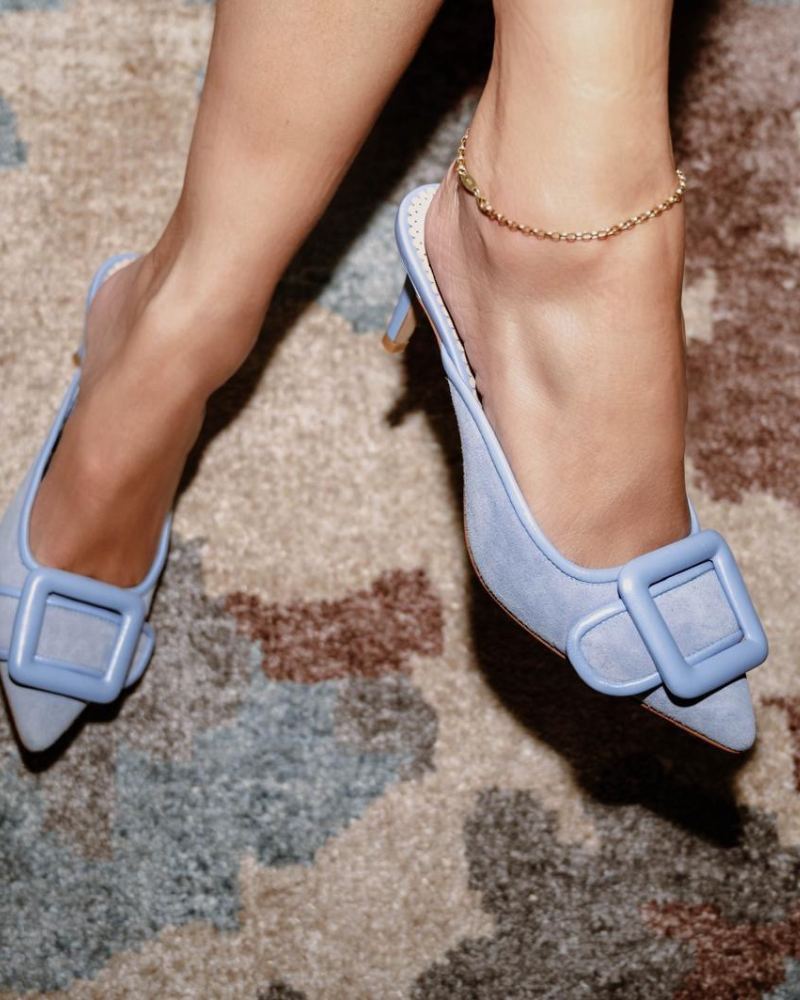Introduction
Imagine slipping into a pair of heels that not only look stunning but feel like walking on air. For many women, the quest for fashionable yet comfortable heels can be a challenging journey. The dilemma between style and comfort often leaves us torn between our desire to strut confidently in beautiful heels and the reality of sore feet and discomfort.
Heels for women have long been synonymous with elegance, power, and confidence, but finding comfortable shoes for women that also exude style can sometimes feel like an elusive dream. However, fear not! There's a growing array of options designed to make the dream of all-day comfort in heels a reality. In this guide, we'll explore how to find the perfect pair of heels that blend fashion with comfort seamlessly.
The Comfort-Style Balance
When it comes to heels for women, the age-old dilemma has always been striking a balance between style and comfort. Many have resigned themselves to the idea that stunning heels equate to sacrificing comfort. However, the landscape has significantly evolved. Brands now focus on engineering designs that merge fashion with comfort, using innovative materials and ergonomics.
A fundamental shift in the fashion industry has seen a surge in technology-driven designs that prioritize the well-being of wearers. Features like cushioned insoles, arch support, and even specialized padding for pressure points have revolutionized the concept of comfortable shoes for women. No longer does choosing comfort mean compromising on style; today's heels are engineered to offer both.
Choosing the Right Heel Height
One key aspect often overlooked is the importance of heel height in comfort. It's not just about the design; it's about finding the right height that suits your comfort level and daily activities. While sky-high heels might be visually appealing, they might not be the best choice for a day packed with meetings or errands. Opting for a moderate heel height can significantly impact comfort without compromising on style.
It's essential to understand your own comfort threshold. Lower heels, block heels, or wedges can offer stability and ease the pressure on the balls of your feet, providing a more comfortable experience. These alternatives can be just as fashionable while allowing you to breeze through your day without the nagging discomfort that often accompanies towering stilettos.
Material Matters
The materials used in crafting heels play a pivotal role in determining their comfort level. Advances in material science have brought forth an array of innovative options. From soft leathers and padded linings to flexible soles, these materials ensure a more forgiving and comfortable experience.
Additionally, advancements in fabric technology have introduced breathable materials that reduce sweat and friction, combating issues that often lead to discomfort. Natural materials like suede and leather have also gained popularity for their durability and comfort. Always pay attention to the materials used in the heels you're eyeing, as they can make a substantial difference in how comfortable they are to wear.
Finding Your Perfect Fit
Comfortable shoes for women are not just about the design; it's also about getting the right fit. Ill-fitting shoes can lead to discomfort, blisters, and even long-term foot issues. Always ensure you get the right size that perfectly accommodates the width and shape of your feet. Different brands might have variations in their sizing, so it's wise to try them on before making a purchase, or refer closely to size guides provided by online retailers.
Consider your foot's unique features, such as arch support or width, and opt for heels that cater to these aspects. It might be beneficial to seek brands that offer various width options, ensuring a more tailored fit for your feet.
Exploring Comfortable Heel Styles
Not all heels are created equal when it comes to comfort. Certain styles are inherently more accommodating for extended wear than others. Understanding which styles prioritize comfort can be a game-changer in your quest for the perfect pair.
Wedges, for instance, distribute weight more evenly across the foot due to the wider surface area at the base, offering stability and reducing strain. These are fantastic options for all-day wear, providing height without the discomfort often associated with traditional heels.
Block heels, characterized by their wider, squared-off base, offer excellent stability. Their broader surface area provides more support, making them a great choice for those seeking comfort without compromising on style. The chunky nature of the heel reduces the pressure exerted on your feet, ensuring a more comfortable experience.
Platform heels have made a resurgence in the fashion scene and for good reason. The elevated front on these shoes reduces the arch incline, making them more comfortable to wear for extended periods. They add height while allowing for a more gradual slope, reducing strain on the ball of the foot and making them a favorable option for comfort-conscious fashionistas.
Slingback heels, with a strap around the back of the heel, offer support and security, keeping your foot in place without constraining it. These can be found in various heel heights and styles, providing both elegance and comfort.
Kitten heels, with their modest height and slight curve, offer a touch of elegance without the discomfort of higher heels. They are perfect for those who desire a polished look without compromising on comfort. Their small size and slight incline make them a favorable choice for prolonged wear.
The quest for comfortable heels for women that don't compromise on style has never been more achievable. With advancements in design, materials, and a deeper understanding of the balance between fashion and comfort, finding the perfect pair of heels for all-day wear is within reach.
Investing in comfortable heels is not just about pampering your feet but also about empowering yourself. When you feel comfortable in what you wear, your confidence soars. The right pair of heels can elevate your style without causing you the discomfort traditionally associated with such footwear.



